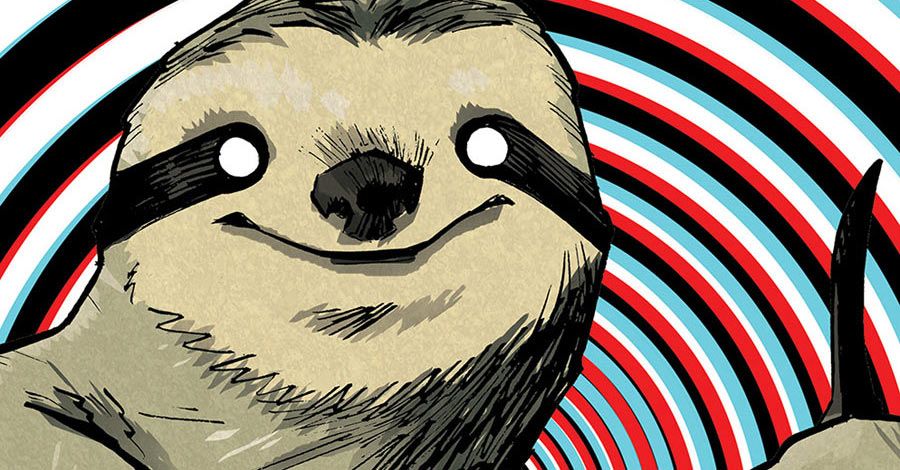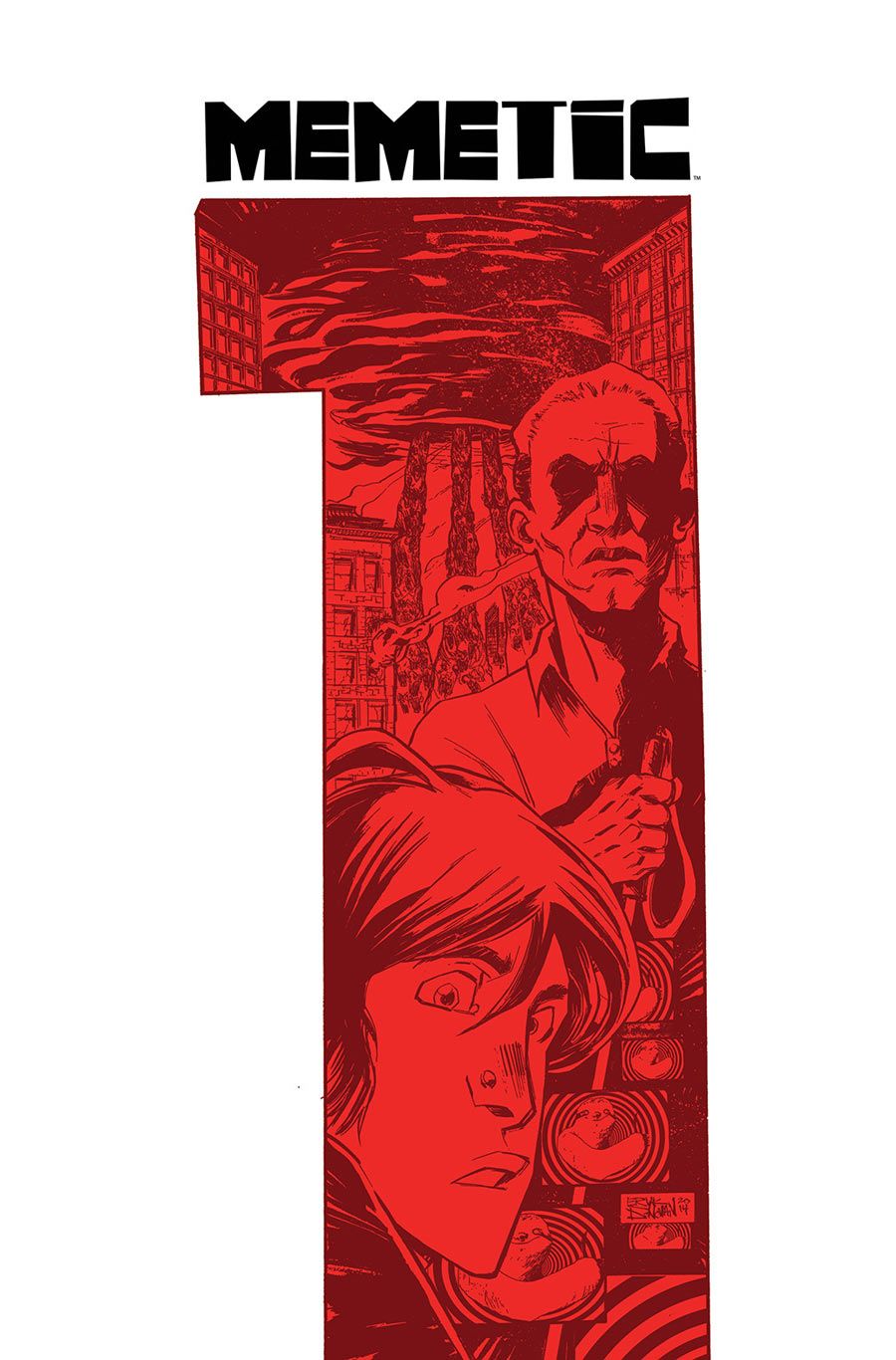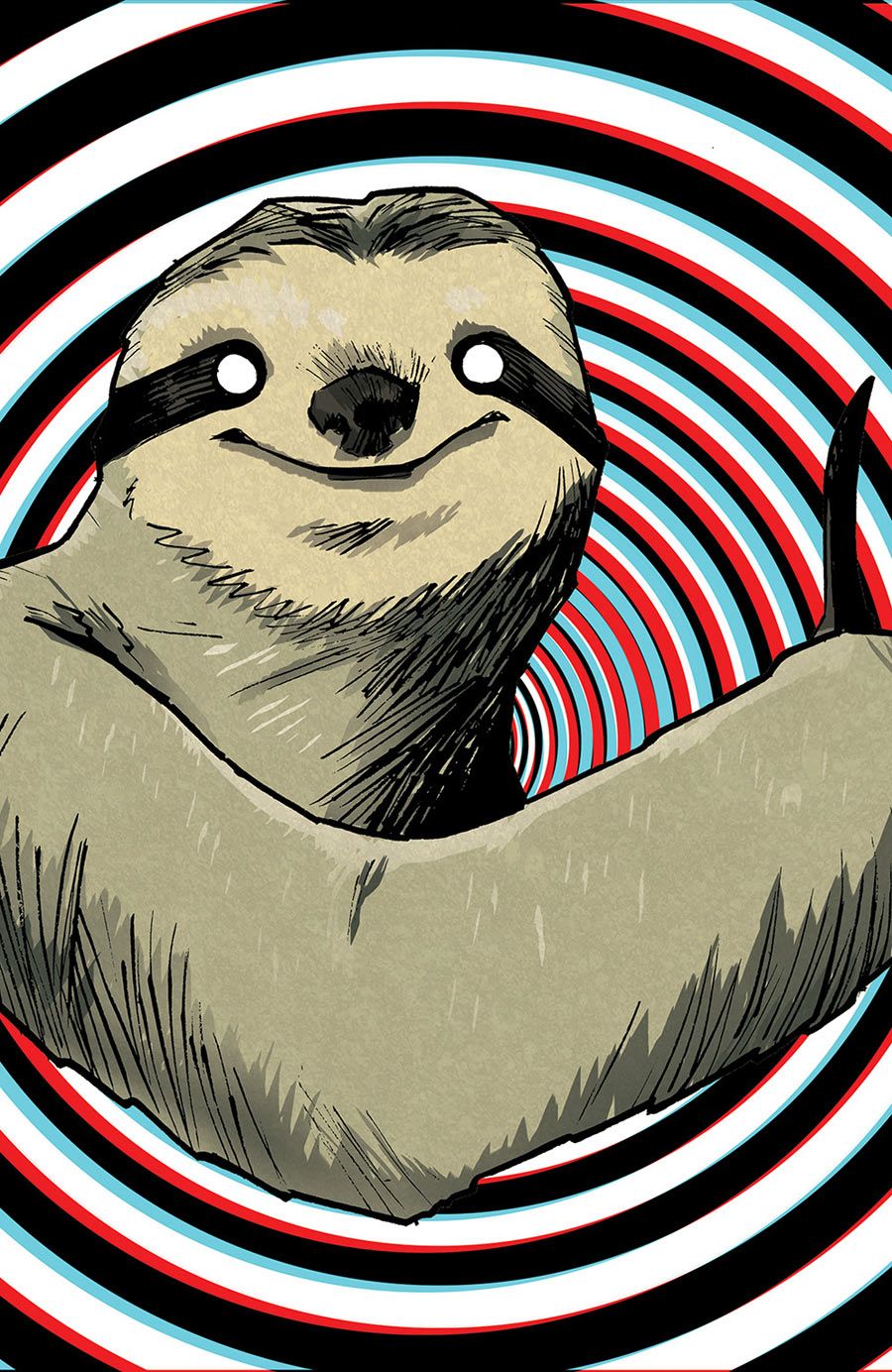The Internet's out to get you in James Tynion and Eryk Donovan's "Memetic." The limited series, launching on Oct. 22 from BOOM! Studios, consists of three 48-page books that take a lot of their influence from the horror manga that influenced the writer over the years.
"Memetic" finds a world in the grips of turmoil when a meme that hits the Internet seems great at first, but soon leads to mysterious chaos. The series focuses on a colorblind college student named Aaron Sumner and a military man known as Marcus Shaw -- who is legally blind. Both use what used to be disabilities to avoid the killer meme.
CBR News spoke with Tynion about juggling his current workload, coming up with original ideas like "Memetic" and the ways in which the Internet has changed how people communicate.
CBR News: Between projects like the recently announced "Memetic" and "The Woods" at BOOM!, plus everything else, you've got a lot of comics in the works. Have you had any trouble staying on track with so many irons in the fire?
James Tynion IV: There's always a little bit of last minute panic and frustration, but the big thing with "Memetic" is, I wrote the first draft of the first issue back in December. This has been on the slate for a long time and it's a story I came up with about two years ago. The other thing is, the original pitch, since it's only three issues, laid out pretty much exactly what happens across in pretty intense detail. I was already working off of a fairly functional outline and now pretty much the whole thing is in the bag. That helps.
I'm doing a little project for "Sensation Comics," I'm doing a bunch of little things over the next few months. When people ask you, "Hey, can you write 20 pages?" It's like, "Oh yeah, of course I can," but when you realize you've agreed to throw in 80 pages [total], that changes things. It's been a kind of frantic summer, but it's fun. It is really, really fun and it's fun to get into that manic state where you're just producing script after script after script.
Some people get writer's block while others who work on a deadline as you do just power through. Do you ever have to deal with an idea blockage?
I need to work on deadline. I've always been terrible at working on abstracts like, "Oh you should get that done." I need to know when they need it and then I feel the fire coming up behind me. I've never had a problem in terms of something that needs to go to an artist and getting it in when the artist needs to start drawing. It's more like when I'm working four or five months ahead on something, then it's like, "Okay, I'm going to focus on the stuff that's right now rather than the stuff that's coming up." If an artist isn't going to start drawing for a month or so, then I'll do what needs to be done first.
Is that what happened with "Memetic," considering you came up with the idea two years ago?
I wrote the first script for "Memetic" in December and early January. I wrapped the second script sometime in March and the third script now. We got the project up and running, we found our artist and started doing character designs. Then I got busy with the launch of "The Woods" and all that. Now, I'm digging back in and wrapping up the last issue and it'll be ready to finally be seen by the world.
When you have an idea like this that's in your head for so long, do you actively think about it for a while or put it away for a period of time before digging back in?
Something has to trigger it. When people ask where ideas come from, that's actually never been an issue for me. I've always had more of an overabundance of ideas and not the time to execute them. When I really fall in love with a concept, for whatever reason, the gestation period is that it sits in a drawer for a year. Then it finds a publisher and then, about a year later, it's out. When I have a really, really good idea and I really, really want to do it, I sort of know, "Okay, because I have this idea right now that means that this is probably a 2016 book." If it holds in your mind for long enough, then you really know that it has legs and it's something you want to do. "The Woods" had a similar gestation period.
There was a moment closer to a year and a half ago, around December of 2012, where I sat down. At that point I knew I was working on a lot of superhero stuff and I had the pitch for "The Woods" but I didn't have a home for it. I wanted to get more of myself out there. One weekend, I challenged myself to come up with three huge idea, crazy pitches that you could only do in comics, things that were huge high concept weirdness that are short pieces I wanted to do. I came up with, ultimately, five, but there were three that are sort of tied together. The first of those was "Memetic." I started thinking of them as my apocalypse trilogy. The second one already has a home, but you won't hear about it for another year or so.
That's really where the book came from. I wanted to play with horror in a way that I wasn't really seeing played with in comics right now. Something more creepy. One of my biggest influences in horror, especially in the comics realm, is Japanese horror, particularly the manga of Junji Ito and that kind of slow build. That's part of why these issues are oversized. Though it's only a three-issue miniseries, each issue is 32 pages because I need to find that space to let this thing slowly, slowly build up. Even with that slow build, it's ending in such a huge place that it's meant to knock you back.
Comics can be tricky when it comes to horror, especially when it comes to the slow build, because the reader reads at their own pace. How do you take that into account when writing?
A lot of it comes down to paneling. You can manipulate time depending on how much you put on a page. You can sort of arrest the readers with a big moment or slow the readers down with lots of small moments that are happening simultaneously that take time to walk through.
Two things have been really helpful with that. One, is actually pacing action. In my superhero work, particularly "Batman Eternal," where there are so many subplots, so many little pieces, I've become very conscious of what you can do in just a couple of pages to build tension and get to the immediate emotional point before going on to the next. The other thing that was really helpful was working on my Thrillbent series "The Eighth Seal," and more recently "The House in the Wall." Those are very different formats because you have the ability to drop in splash panels and through swipes you can totally break the standard pacing of a typical western comic. With that and also reading lots of horror, I tried to put together all the pieces that really allow me to do what I want.
I think one of the big things that I noticed, and it's been pointed out to me, is that I do a lot more reaction shots than I see in a lot of other peoples' artwork. I think that is because of my basis in manga. It's taking that moment to pause on the horror of someone's face. That's such an important moment, it's a cue to show you how to react and makes you afraid of what they're seeing before you see it.
Was there a specific event or idea that helped lead to the killer meme in "Memetic?" Did you do much research into memetics or meme theory?
I started dicking around on the Internet when I was in grade school and middle school. That was sort of the birth of the meme. I remember the Neil Cicierega's Animutation videos and things like that. Suddenly, there were these little artifacts that your friends would shoot you. Slowly but surely, you would just know that everyone around you had seen it. That's very strange because it changes it from, "Here, I want to show you something," to more, "I want to promote that I know this thing that everyone else knows." There's a shift there.
I've been doing research on it -- not 'research' research for this project, but it's something I've been reading about my entire young life: Why that happens and what's the meaning behind it. Something as silly as a cat picture online has this basis in evolutionary memetics, which is just the cousin to evolutionary genetics. That's incredibly fascinating. The idea of how ideas propagate and spread is how culture happens. Culture's happening so fast now, that it can be dangerous. If a dangerous idea could spread as quickly as a silly picture on the Internet, that could destroy all of society. That's where the horror of this series comes from.
Is the identity of the person who creates the killer meme a mystery to be solved in the story or is the character more front and center?
It's definitely a mystery. The meme is impossible. It creates this reaction in people that a simple image cannot produce. The only scientific evidence that it does produce this reaction is the fact that it's actually producing the reaction. There's nothing inherent about the image that should cause the reaction it causes. That's part of the strangeness and the building terror that happens here. In terms of the person behind it, that's a wait-and-see. You'll have to pick up the series for that.
Who will the readers be following as the story progresses?
There are two leads. There's a young man in college who's down on his luck and not too pleased with his life. He's a monochromat, which is the purest form of colorblindness, so the image does not have the effect on him that it does everyone else. The other piece of the story is how something that connects everyone can make people feel very isolated. I wanted to make the main characters isolated characters. Aaron Sumner, who's one of our leads is a young, gay college student who can't see the world everyone else can. When this thing comes out and brings everyone together, he's left on the outside. That leads him to bear witness to the world falling apart.
The other lead character is a former head of military intelligence ,Marcus Shaw, who suffers from macular degeneration. His eyesight is almost completely gone, so the meme also doesn't not affect him. He's the sort of person who was actually running military intelligence in the '90s while the Internet was coming into being, so he's aware of the possible threat of weaponized memetics. He's our viewpoint into how the government's reacting to it and how that whole process is happening. Those are our two real leads, there are a cast of characters around the leads, but those are the characters we really follow through the bulk of the story.
What does the meme actually do to the people who see it?
When you first see it, you get a wave of euphoria, something that just trickles through your entire body. It doesn't matter how long you look at it or how many times you look at it, it hits you as strong every single time. It's a phenomenal feeling. That's how it spreads so quickly, because it is this really positive response. What happens 12 hours after that moment is a whole different thing, and that's where the series starts getting a little bit spooky.
You worked with Eryk previously on a story in the anthology "In the Dark" and "House in the Wall." was he the first name that came to mind when getting "Memetic" together at BOOM!?
I developed the series well before I ever met Eryk, but I've gotten very accustomed to his storytelling and it became very apparent that he would really do justice to the kind of imagery and emotional work that I wanted out of this series. When we were thinking about artists and the possibility of bringing in Eryk came up, I was like, "Yes, yes please." I'm really, really happy to have him on the book. Between "In the Dark," "House in the Wall" and now this, it's the third time I've worked with him in just a year. I keep joking that I'm just going to lock him in the basement and keep him forever, because that's how I feel right now. I think his work is great and I think he's getting better with every single page he turns in. I see this as the beginning of a long and fruitful partnership.
You wrote this before you met Eryk, and you've talked about how important the pacing is to this story, so are the scripts super tight as far as description and layout?
Sometimes with action sequences or even dialog pieces in superhero work, I'll give some flexibility, but with horror, I'm very rigid because I know how I want it to pace out. Eryk will throw an idea by me and it's way better than what I came up with, which is fine, but in terms of keeping the pacing in my head, that's what I always do.
"Memetic" #1 from Jame Tynion IV, Erik Donovan and BOOM! Studios hits stores on Oct. 22.



